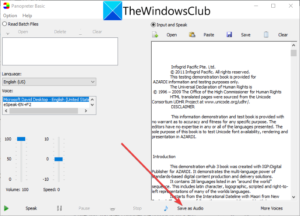

- AUDIOBOOK CREATOR FROM MP3 FOR ANDROID 320KBPS
- AUDIOBOOK CREATOR FROM MP3 FOR ANDROID MOVIE
- AUDIOBOOK CREATOR FROM MP3 FOR ANDROID MP4
- AUDIOBOOK CREATOR FROM MP3 FOR ANDROID ARCHIVE
- AUDIOBOOK CREATOR FROM MP3 FOR ANDROID PORTABLE
The odds are good that you wouldn’t notice much improvement in sound quality by re-encoding your CDs using an MP4 file unless you’re using some high-end audiophile gear. If you already have a massive collection of MP3 audio files, and they’ve been created at 256kbps or higher, keep ’em.

Doing so creates a larger file of the same quality as the MP3. The same is not true in reverse: Once an MP3 has been created (and parts of the original audio information discarded in the compression process), you can’t get it back by converting it to MP4/ALAC.
AUDIOBOOK CREATOR FROM MP3 FOR ANDROID PORTABLE
As a lossless format, ALAC not only preserves all of the detail of your source material, it still lets you create MP3s (or MP4/AACs) anytime you like if you need a smaller, more portable version.
AUDIOBOOK CREATOR FROM MP3 FOR ANDROID ARCHIVE
If, as we’ve suggested earlier, you intend to archive your digital or analog music, an MP4 using ALAC is far superior to the MP3.
AUDIOBOOK CREATOR FROM MP3 FOR ANDROID 320KBPS
It’s also worth noting that at 320kbps, an MP3 will probably sound identical to a 320kbps MP4/AAC. An MP3 file is virtually guaranteed to work on any device that plays digital music. There are still folks out there holding on to some pretty old portable music players that still work just fine - but these may not be compatible with the MP4/AAC format. However, it would help if you kept in mind where and how you plan to play your music files. That makes sense as AAC is a newer compression technology.

Most experts would argue that an AAC-encoded MP4 audio file sounds better than a similarly sized MP3. However, Apple’s hi-res capable lossless audio codec, ALAC, is also an option for MP4 files, which preserves all of the detail of a CD, or a vinyl album, while still keeping file sizes smaller than the original - making it a good choice for archiving music. It’s a lossy compression codec like MP3, with the same bitrate options for quality, but it does a better job of preserving details and nuances in music at the same file size as an MP3. Typically, people will use the AAC (Advanced Audio Coding) codec. Because MP4 files are containers, you can choose from several different audio codecs depending on your needs. But since these are conventions, not rules, the only real way to know is to try opening the file using an MP4-compatible media player or examining the file’s contents.īut what does this have to do with MP3s, you might be wondering? An MP3 is both a file format and a codec - which means that it can only handle audio using the lossy compression described above. m4v is sometimes used to indicate that it’s a video. m4a file extension for MP4 files that only contain audio, while.
AUDIOBOOK CREATOR FROM MP3 FOR ANDROID MOVIE
If you find one called “Rocky.mp4,” is it the movie Rocky, or is it the movie’s theme song? Or is it something else? To help reduce the confusion, Apple decided to start using the. This makes it a bit tricky to know exactly what an MP4 is. Unlike the MP3, which is exclusively used for audio, an MP4 is a container file used to store audio, video, or other data like subtitles. Still, today it would be rare to find a digital music player that can’t handle all MP3 bitrates - even VBR (or variable bitrate) MP3s that use different rates during different parts of the music track as the complexity of the sound increases or decreases. 128kbps was preferred in the early days of the MP3 format because it was compatible with most MP3 playback devices like iPods. If file size is a big consideration - as it was when the MP3 became popular - you can get away with as low as 128kbps before sound degradation becomes noticeable. At 320kbps, most people will find it impossible to tell the difference between an MP3 and a CD. The difference between these two is huge - at 8kbps, your music will sound a little better than an AM radio with poor reception. The bitrate, on the other hand, can be set anywhere from 8kbps to 320kbps. Most MP3s are created with a 44.1 kHz sample rate - especially when converting from CD because it’s the same sample rate used for creating CD audio. When creating an MP3 from a source, whether it’s CD or even vinyl, you choose a bitrate and a sample rate - these two values will determine how big your MP3 will be in terms of file size, but more importantly, how good it will sound when compared to the source you’re using. No, and the differences can be noticeable. Sony WH-1000XM3: Which headphones should you buy? Powerbeats3: Which Beats wireless earphones are right for you?īose Noise Cancelling 700 vs.


 0 kommentar(er)
0 kommentar(er)
